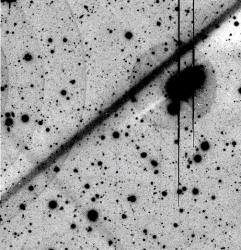Every day, material is raining down on the Earth. Fortunately, we’ve got an atmosphere to protect us. As the tiny particles impact the atmosphere, air piles up in front of them, heating up, and blazing a trail in the sky. That’s a meteor. According to a team of Japanese researchers, as the micrometeoroids rain down, they carve out tiny tunnels just a few millimetres across.
Astronomers used to believe that meteors opened up gaps in the atmosphere less than a metre across, but they weren’t exactly sure how wide they really were. But new observations from the powerful Subaru telescope located atop Mauna Kea, Hawaii have narrowed the size down to just a few millimetres.
Observing meteors with the Subaru telescope is actually very difficult. It was designed to observe deep space astronomical objects, nothing as close as the Earth’s atmosphere. This means that the meteor trails look blurry. Even observations of satellites look blurry. Despite the blur, the researchers were able to get their data.
Over the course of a 19-hour observation, 13 meteor tracks were observed. Scientists then carefully analyzed the images, to see how many photons were released as the meteor passed through the atmosphere. Based on the number of photons they detected, the researchers were able to calculate that the trails are just a few millimetres across.
Original Source: Subaru News Release

